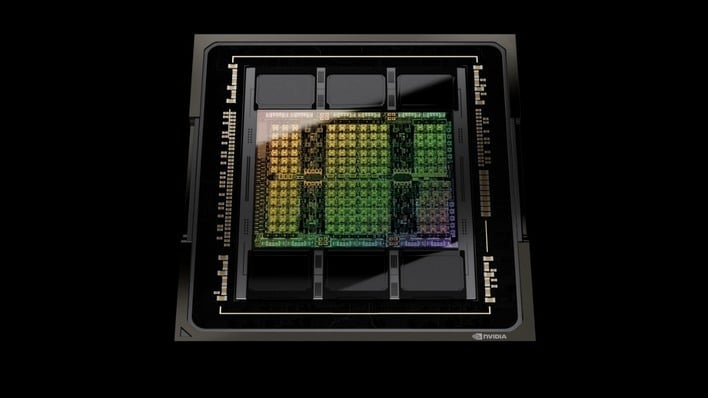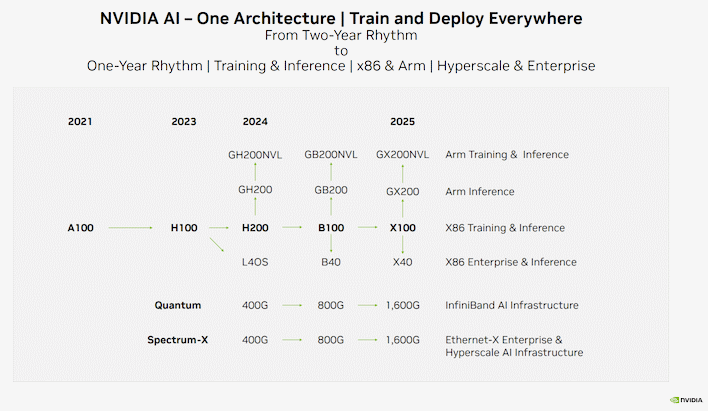NVIDIA Roadmap Hints At An Annual GPU Architecture Release Cadence

That may change before long. Back on October 1st, NVIDIA held a presentation for its investors to get them up to speed on the company's technology, its place in the market, and its future plans. The slides for the presentation are up on NVIDIA's site, and most of them are exactly what you'd expect. Buried among the piles of self-aggrandizement and (admittedly justified) bullish AI enthusiasm is a very interesting slide:
It says it right there at the top: "from two-year rhythm to one-year rhythm". However, on the roadmap itself, it actually implies that NVIDIA will release three new products over the next two years. In 2024, we can look forward to the recently-announced refresh of Hopper and the launch of the previously-known Blackwell, while in 2025 NVIDIA will apparently launch another new architecture labeled "X". We don't know if "X" is a placeholder for "unrevealed new architecture" or if it will actually be called "X100", but either way, it's clear that this isn't a refresh of Blackwell.
Of course, we don't know whether these plans will have any effect on the consumer market. The last official word we've heard about a GeForce successor to the Ada Lovelace architecture is the idea that it will be based on a revised and downscaled Blackwell architecture. That would put the next GeForce generation well into 2024, which to be fair, does align with earlier rumors. It certainly isn't a "one-year rhythm" though.
The reality is that the majority of NVIDIA's income these days, as well as its greatest competition, is in the enterprise and datacenter AI market. NVIDIA faces tough challenges not only from Intel and AMD, but also from companies like Google, Microsoft, Amazon, Meta, and even Apple, all of whom would like to get a slice of that trillion-dollar pie that NVIDIA's been feasting on. Even if NVIDIA keeps this schedule and releases three new datacenter GPUs over the next two years, it's unlikely gamers will reap the benefits.


